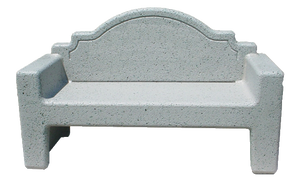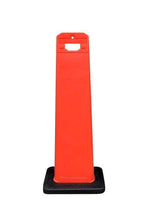Bollards & Bollard Covers
About Bollards
Bollards are sturdy security posts made from durable materials such as steel and high-density polyethylene and are great tools for restricting vehicle and pedestrian flow. Some surface-mounted bollards are designed to stop vehicle impacts, but they all serve as visual aids for drivers and pedestrians alike. Bollard covers made with bright colors can be used to enhance visibility, especially in low-light conditions where accidents are likely, such as parking lots and busy walkways.
Choosing the Right Bollard Mount Type
Bollard Covers
Bollard covers are durable sleeves typically made from high-density polyethylene plastic, designed to fit over bollards. They provide a protective layer that shields against rust, weathering, and minor impacts while improving the appearance of your bollards.
Why Choose Bollard Covers?
- Enhanced Visibility: Bollard covers are available in bright colors, ensuring your bollards are easily noticed by drivers and pedestrians, even in low-light conditions.
- Low Maintenance: Say goodbye to frequent repainting and repairs. Bollard covers protect your bollards from wear and tear, saving you time and money on upkeep.
- Durability: Made from UV-resistant plastic, these covers maintain their color and integrity, even in harsh outdoor conditions.
-
Easy Installation: Simply slide the cover over your existing bollard—no special tools required!
Bollard FAQs
Q: How easy is it to install bollards?
A: Bollards are installed in different ways depending on the type of bollard. Surface-mounted bollards are perhaps the easiest to install, requiring just a drill bit to create a 3/4-inch opening in the concrete for the bolts to fasten down the base plate. Retractable, removable, and anchored concrete bollards require more work to prepare the surface but can still be installed relatively easily.
Q: What kind of bolts are needed for surface-mounting bollards?
A: Most of our bollards include the necessary mounting hardware.
Q: Would these bollards stop a vehicle at full speed?
A: Most bollards, especially surface-mounted bollards, are not fully impact-resistant. However, they are very effective as a deterrent.
Q: Are bollards reflective at night?
A: Bollards don't typically come with reflective tape already on them, but bollard covers often include a ridge at the top where reflective tape can be attached.
Q: Are bollards hollow to fit over steel pipes?
A: Bollards are not built to fit over other bollards, but bollard covers are made for this purpose.


 Barricades
Barricades
 Belt Barriers
Belt Barriers
 Wall Mounted Belt Barriers
Wall Mounted Belt Barriers
 Classic Stanchions and Ropes
Classic Stanchions and Ropes
 Plastic Stanchion Posts and Chains
Plastic Stanchion Posts and Chains
 Signage
Signage
 Traffic Control
Traffic Control
 Chain Link Fencing
Chain Link Fencing

































